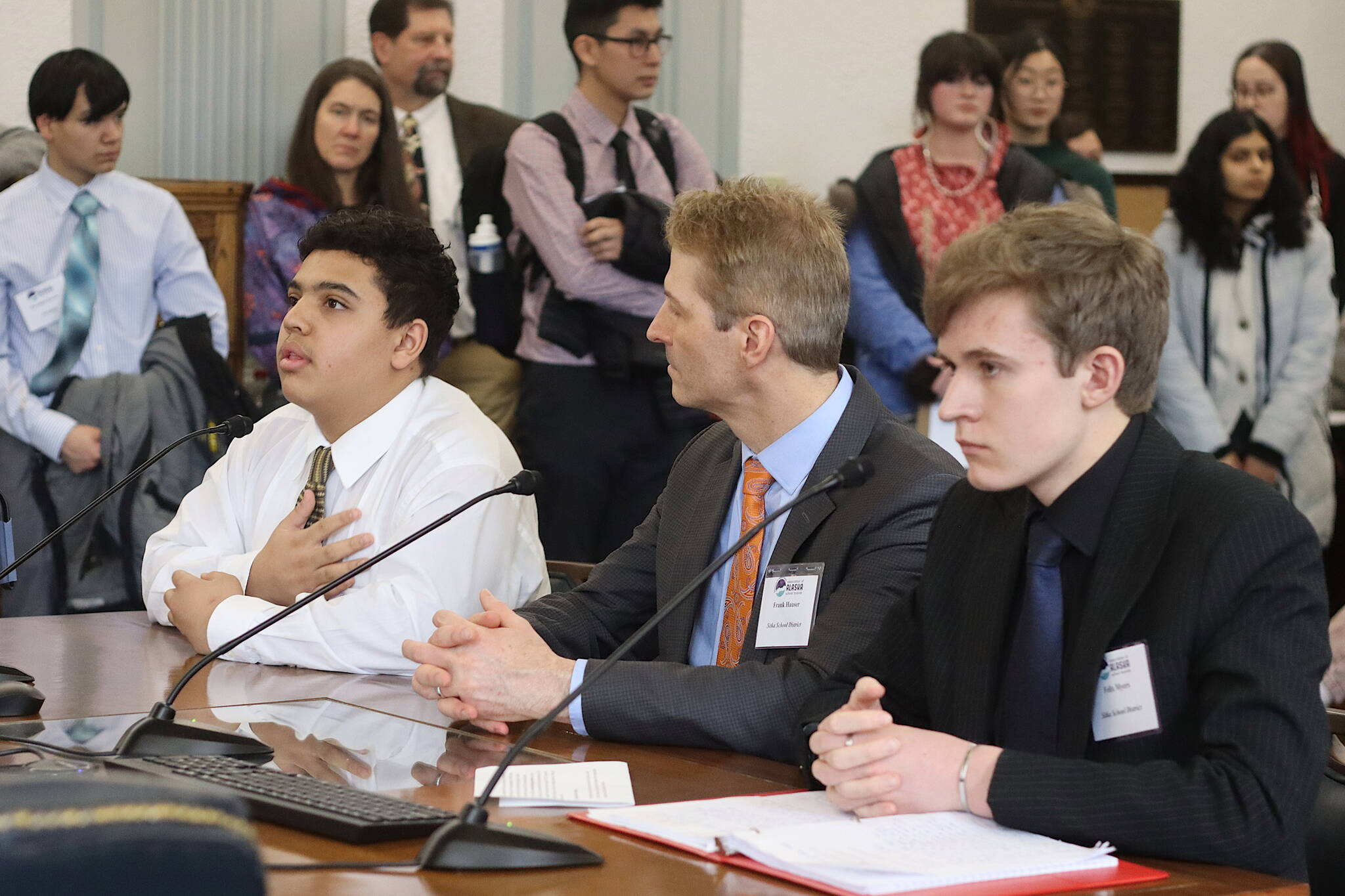Students and educators from around the state heard plenty of favorable remarks from lawmakers about boosting school funding and services as they wandered throughout Alaska State Capitol on Monday, but not surprisingly are still offering a grade of incomplete since finals are far away.
A proposal boosting per-student school funding by about 17% was introduced last week by state Senate leaders, which the governor and state House have responded to by stating they will likely support an increase — but perhaps a lesser amount and with performance accountability provisions in the wake of standardized test scores that are among the nation’s lowest. The base student allocation that determines per-student funding has remained essentially unchanged since 2017, resulting in an effective loss of what schools can spend due to inflation.
More than 50 of the visiting students and staff filled the benches and stood along walls on both sides of the room during a Monday afternoon meeting of the Senate Education Committee, which introduced last week’s funding increase in Senate Bill 52. It adds $1,000 to the current $5,960 BSA (which is $30 higher this year than previous years dating back to 2017), with no other provisions such as annual adjustments for inflation or accountability measures in the initial draft leaders called the “beginning of the beginning” of discussions this session.
A Legislative Finance Division memo released last week shows an increase of about $1,200 would be needed during the next fiscal year for the BSA to be worth the same as in 2017 when adjusted for inflation. Felix Myers, one of two Sitka School District students testifying during Monday’s hearing by noting an increase of about $2,200 would be needed to match school funding levels in 2009.
“The question we are asking ourselves is not ‘Do we fully fund education?’” he said. “It’s ‘How much do we underfund education by?’”
Republican Gov. Mike Dunleavy, whose proposed budget for next year keeps the BSA at the same level, said when he released the spending plan it was a starting point and an increase negotiated with the legislature was likely. Dunleavy spokesman Jeff Turner essentially repeated that sentiment in an email to the Anchorage Daily News after the senate bill was introduced last week, the governor “acknowledges that an increase in education funding this year is appropriate” without specifying an amount the governor might support — but that he wants accountability measures included.
Opposition to the bill introduced in the Senate, which has a majority of nine Democrats and eight Republicans, is expected from the Republican-led House majority. Rep. Justin Ruffridge, a Soldotna Republican who co-chairs the House Education Committee, has previously stated he’s support a BSA increase of $250 to $750, but last week also told the Anchorage Daily News accountability provisions need to be part of the discussion.
Among the most notable opponents outside the Capitol of education funding increases is the Alaska Policy Forum, a conservative, nonprofit think tank based in Anchorage that asserts total per-pupil revenue has grown by 32% over the past two decades when all local, state and federal funding sources are included. The organization also favors “competition” measures such as vouchers, with Dunleavy a potential ally as his actions have included declaring Jan. 22-28 “School Choice Week.”
Senators speaking in favor of the formula increase bill have acknowledged it may mean reducing the Permanent Fund dividend, which is one of the early lines of attack by opponents. That’s frustrating to Peter Hoepfner, a Cordova School District Board of Education member since 2005, who said lawmakers from both parties offered encouraging words during his visits around the Capitol on Monday, but he doesn’t know if that will translate into actual support for a formula funding increase.
“It’s just painful to see education tied to the PFD,” he said.
• Contact reporter Mark Sabbatini at mark.sabbatini@juneauempire.com

